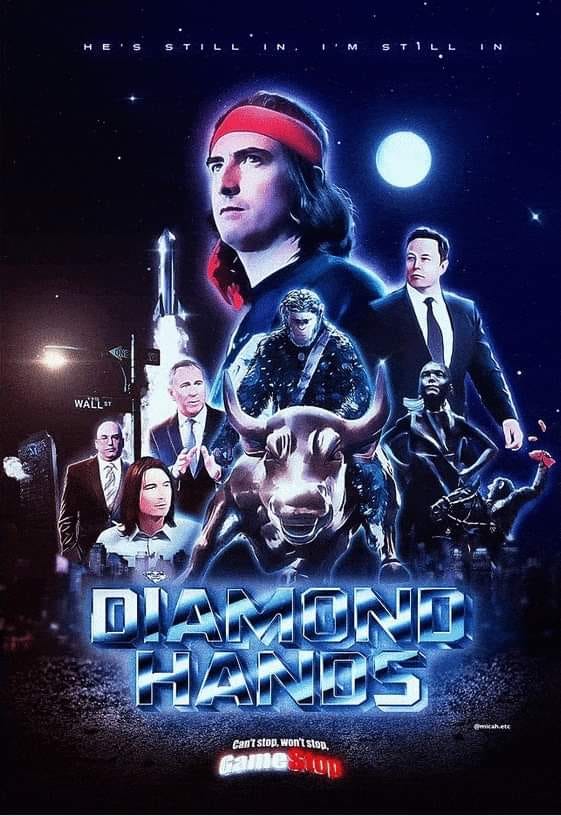With Great Reach Comes Get Responsibility…
I really enjoyed reading up on three wildly divergent outcomes for attempts to harness the wisdom of crowds this past couple of weeks.
First, the OG of harnessing crowds for good: Wikipedia turned 20 years old. The project, whilst not without its wrinkles and problematic aspects, is an undeniably amazing achievement that stands as a rare example of success in creating a sustainable public commons from the early utopian period of social networks. I fall down Wikipedia holes several times a week, typically starting at an event I want to learn more about (this week was the 1571 siege of Famagusta) and ending in pre-history or geology. We take it for granted, but knowing what we now know about the dark side of social networks, it is truly a miracle that it exists.
On the other side of the ledger, Bellingcat published a thorough and jaw-dropping account of the rise of QAnon and the way it went from a prank on 4Chan to a virulent infection that targeted the old and hard of thinking on Facebook and finally into the US Congress.
But perhaps even more remarkable, the last couple of weeks have seen the rise of Diamond Hands versus (some) Hedge Funds in /r/wallstreetbets:

GME poster made by u/BirdisonBird
I have spent a week transfixed on the debate in /r/wallstreetbets as the $GME share price has swung wildly in a range of $85-$483 (from a 52 week low of $2!), and at least one hedge fund has admitted to multi-billion-dollar losses on their naked short positions that were exposed by the folk hero ‘Roaring Kitty’ among others.
This story is an ethnographic goldmine that requires not only a strong meme game, but also some knowledge of how a generation that came of age during the fallout from the 2008 financial crisis sees wealth, justice and power in ways that might surprise you, all wrapped up in rapidly evolving game mechanics.
There was a period in the mid-2000s when consultancies were obsessed with gamification as a technique to incentivise target behaviours. It was almost always no more sophisticated than giving employees virtual badges for using some terrible enterprise system that the company was trying to impose on people. But what we are seeing here with all three of the above stories is massively multiplayer online role playing game (MMORPG) mechanics having unprecedented power to change society for good or ill.
Wikipedia incentivised (mostly white male) nerds to compete with each other in pedantry and virtue signalling, but they also brought their insufferable gatekeeping tendencies to bear on the process. QAnon exploited credulous disempowered individuals who had a sense that something was wrong with politics, but couldn’t quite muster the analysis. But the Diamond Hands movement has shown that if you play by different rules and with different goals in mind, then even the stock market can be gamed (APE TOGETHER STRONG!).
Roaring Kitty was sitting on unrealised gains of over $40m (IIRC) at the peak, but decided to liquidate only a small amount and hold all the way down (as of today at least) as de facto leaders of millions of others who were willing to accept significant paper losses to fight the hedge funds, in much the same way as the mythical Satoshi’s continued holding (or HODLing to use the technical term) of original Bitcoins worth billions inspires legions of Bitcoin HODLers to do the same.
You can set the rules of the game, whether it is leveraged option trading in the stock market, a meme factory like 4Chan, or a crowd-sourced online encyclopaedia … but you should never under-estimate the tendency of “users” to do what you least expect, as this parody of user testing by Alison Burke illustrates:
Company & Product Building Lessons
Speaking of gamification, Josh Williams shared an interesting article reflecting on his experience as a founder of Gowalla during the famous 2010-2011 SXSW Geo-social battle for supremacy, and how both his firm and its rival, Foursquare, were side-swiped by a startup that played by their own rules:
“It turns out there was another app that shared a similar vision called Burbn. They were building yet another check-in type service loaded with every feature but the kitchen sink. But early user feedback, coupled with a desire to avoid the check-in battle shitshow already in progress, led them to drop everything to focus on one simple feature: photos.
They made the act of taking and sharing photos (many of which just happened to be location-tagged) fast, simple, and fun.
They made their own rules. They called it Instagram.
That whole see the world through the eyes of their friends thing? Turns out Instagram did a pretty good job of this”.
These small differences between how very similar companies envisage and develop their products can teach us a lot about how to be more customer focused and avoid making the same mistakes others have made.
Another recent article I enjoyed analysed 5 things Atlassian did differently when building their incredibly successful and admirable company from its origins developing JIRA, which was then just another issue management system:
- Build on the backbone of product-led growth
- Launch a second product incredibly early and learn when to let go
- Hand over the reigns to channel partners
- Defer a play for enterprise
- Put a premium on first-principles culture
We were early channel partners using the Confluence wiki (yes, it used to be a wiki 😉 in an enterprise context – in fact, before they were convinced of that use case outside of tech teams – and so we got to see their success up close, and I would add that the down-to-earth values of the founders were also a key factor in what made them what they are today.
Management Technique for Consensus Building
In our view, operating mostly by consensus in a modern organisation can hold us back and dampen innovation, but as with all things it is about balance. I like the idea pioneered by WL Gore that decisions or proposals that carry above-the-waterline risk can be waved through and if the proposer is passionate about their idea, then it should be given a chance, but any involving potential below-the-waterline risk should use an advice process where all key stakeholders need to sign off on it.
But in some respects, a background process of consensus building can also contribute to a healthy and aligned workplace. Erin Casali wrote up her take on the Japanese management technique Nemawashi that provides a framework to achieve this, which is worth reading in full:
“With the premise that I haven’t worked in a Japanese organization directly, so I can’t speak to the practice as semi-formally used in the Japanese culture, I think the word and its definition fits an important skill that anyone should learn and improve — I believe it’s one of the most important skills on the workplace (and useful even beyond that).
Coaching, affiliative, democratic, commanding, pacesetting, visionary: four out of six leadership styles are grounded in nemawashi, unsurprisingly all the ones that are related with a positive climate“.

